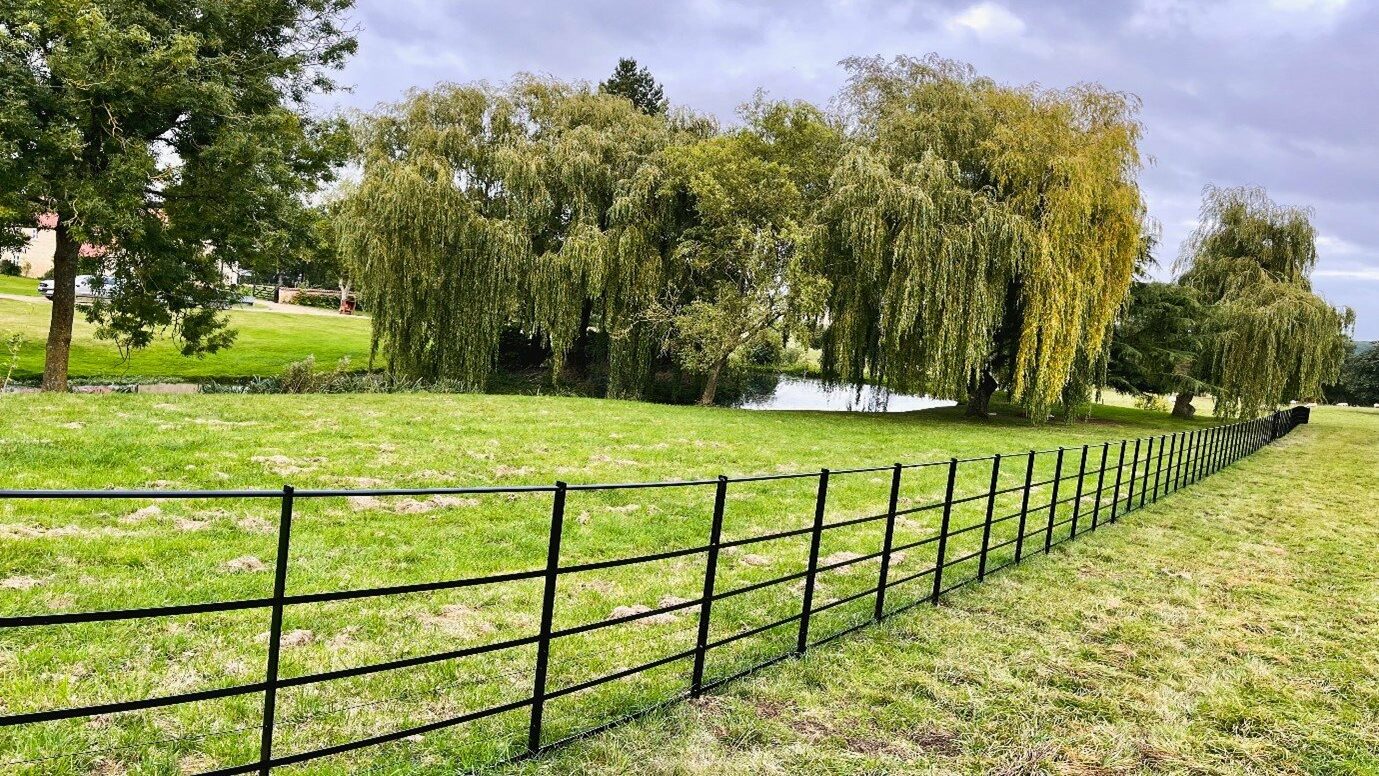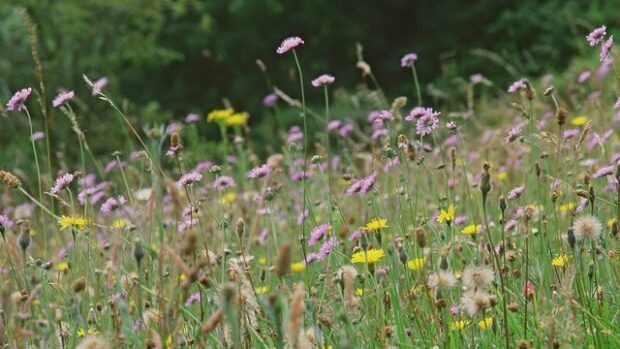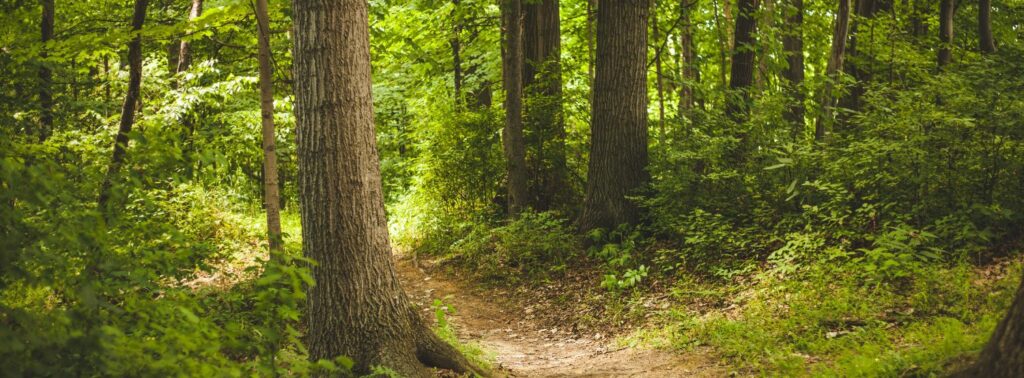Unfortunately, these things, which we often take for granted, are threatened by habitat loss, increasingly harmful agricultural methods and climate change in the UK. This is why it’s so important for us all to do our bit to help to give our native wildlife species a safe haven to thrive.
Encouraging wildlife, or rewilding as it is sometimes known, means giving back parts of your land to nature to allow current species to thrive, and even attract those which are endangered elsewhere.
In this blog, we’re going to be looking at a few ways that you can rewild parts of your estate to encourage biodiversity and protect wildlife.
Why is Encouraging Wildlife Important?
Biodiversity can be classed as everything within the natural world, which includes plants, animals, insects, and the ecosystems in which they live.
Although we tend to think of nature and wildlife as something that’s nice to look at and spend time in, it’s actually far more important than you might think.
Without encouraging biodiversity, the entire human and animal life support chain can no longer function, and we rely on these chains for food, water, medicine, and climate control.
According to Earth.org, the UK has lost almost 50% of its natural biodiversity, which is why it’s so important for all of us to do our bit to help to reinstate important natural environments for our species, and in this blog, we’ll be looking at how you can do this on your estate.
#1: Birds
Birds are a crucial part of the ecosystem of any outdoor space, and putting up bird boxes and laying out food will give them somewhere to feed and raise the chicks of the next generation.
It’s best to place any boxes in a sheltered, dense area, such as evergreen trees or bushes, to protect chicks from high winds, and predators such as predator birds, cats and foxes.
Fat balls are ideal in the spring, as it’s a fantastic protein source for them, and seeds are better for the winter months as this will mimic their natural feeding habits when food becomes more scarce.
#2: Climbing Plants
Ivy, and other climbing plants, such as wisteria and clematis, are ideal for both insects and birds since the flowers are excellent sources of food and pollen.
It’s also beneficial for providing cover for birds and insects. Clematis and roses are especially important for birds during the spring as the materials are used to construct their nests.
#3: Create a Water Source

Insect populations in the UK are in decline, and it’s important that we’re able to offer beneficial species, such as beetles, spiders, centipedes and ladybirds – which are important for removing pest insects, and breaking down waste matter – an ecosystem to do what they do best.
Simple things like leaving strategic rock piles, twigs and rotting wood around the property will create shelter and even food for all manner of insects and minibeasts.
No two insect species are precisely the same, which means they all have different requirements, so if you have any specific species in mind that you’d like to attract it’s best to research the kinds of environments that appeal to this particular insect.
That said, having a variety of habitats like that which we’ve mentioned above is usually the best way to increase insect populations.
#4: Insect Habitats
Insect populations in the UK are in decline, and it’s important that we’re able to offer beneficial species, such as beetles, spiders, centipedes and ladybirds – which are important for removing pest insects, and breaking down waste matter – an ecosystem to do what they do best.
Simple things like leaving strategic rock piles, twigs and rotting wood around the property will create shelter and even food for all manner of insects and minibeasts.
No two insect species are exactly the same, which means they all have different requirements, so if you have any specific species in mind that you’d like to attract it’s best to research the kinds of environments that appeal to this particular insect.
That said, having a variety of habitats like that which we’ve mentioned above is usually the best way to increase insect populations.
#5: Meadows

Wildflowers and long grasses are amongst some of the rarest rural habitats in the UK. By allowing some areas of the grass on the property to grow, and letting wildflowers, buttercups, dandelions and other similar plants flourish, you’ll be creating a haven for butterflies, bees, hoverflies, birds and even snakes to flourish.
Letting short-grass plants, such as daisies, and white clover to grow to their full potential, will give a considerable boost to nectar production, thereby giving insects and birds more food sources and opportunities for pollination.
#6: Composting
Composting is a win-win situation for your estate. Creating and maintaining a compost heap will not only give you a supply of rich, nutrient-packed compost to spread thinly across the lawns and flower beds of the estate.
But you’ll also be creating a ready-made habitat for a variety of insects, amphibians and lizards, such as worms, woodlice, frogs and even the endangered slow worm.
#7: Fencing Gaps
Traditional fencing is a considerable issue for our native wildlife species since they aren’t able to move freely around the property.
Our range of estate fencing not only presents a wonderfully traditional aesthetic for the estate but also leaves considerable gaps to allow wildlife to freely move around your land, thereby linking different habitats, that would usually be closed off, together.
#8: Managing Deer
Although deer are a wonderful sight to behold in the countryside, they are also voracious feeders and are capable of harming trees and plants, especially during their early stages of growth.
While it’s certainly not the case that you want to prevent deer on your property altogether, it’s just a good idea to close off any areas where they could do considerable damage.
Deer are most commonly found in woodland and other areas which are rich with food sources. However, because the deer can usually find a variety of food across estates, they are becoming an increasingly common sight.
Deer possess considerable appetites and aren’t usually fussy about what they consume, particular favourites include, beans, berries, roses, tulips, and a great deal more besides.
One of the best means of keeping deer away from certain areas of your property, such as vegetable patches, and tree nurseries, is by installing specialised deer fencing.
Our deer fencing is manufactured to ensure that they are tall enough to prevent the deer from jumping over it, and the gaps between (which enable other species to continue to move across the estate) are small enough to prevent them from scrambling through or under the fence.
Tree guards are also crucial for protecting developing trees from fraying, which is when young male deer rub their developing antlers against the tree to remove the velvet.
Takeaways
The natural world is a vital component of not only our health and well-being but the overall condition of our planet too.
By giving back some of your lands to nature, you can contribute towards giving many species, endangered or otherwise, a place to thrive.
If you have any questions about managing your estate, or you’d like so more information about our products or services, please don’t hesitate to get in touch with us today and we’ll be happy to help.

